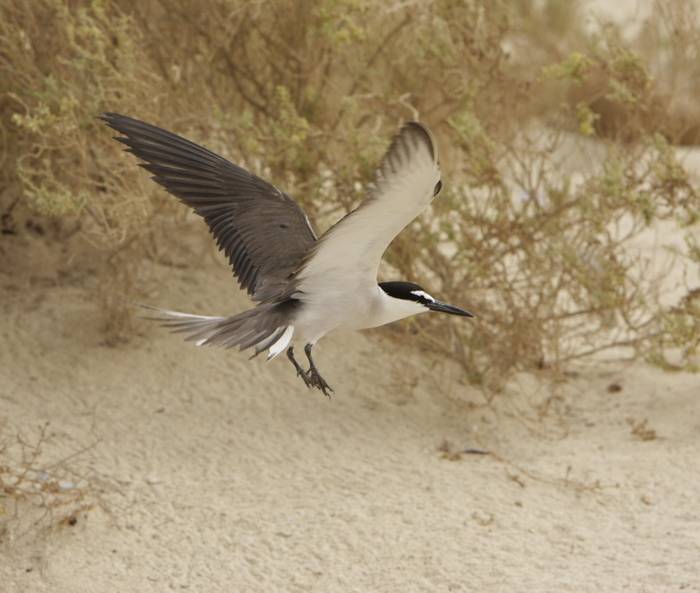A Bridled Tern ringed in the Gulf found dead in Japan
A Bridled Tern that turned up dead in Okinawa Prefecture had apparently flown 7,500 kilometers to Japan from a small island in the Persian Gulf, the first confirmed case of avian migration between the regions.

According to the Yamashina Institute for Ornithology in Abiko, Chiba Prefecture, a foot ring showed that the Bridled Tern came from Nakhiloo Island in Iran.
The bird was found on a golf course in Nago in Japan’s southernmost prefecture last October.
It was the first recorded case of a wild bird flying between the two countries, institute officials said.
“The bird ended up in a region which is way outside of its typical migratory areas,” said an ornithologist at the institute. “We cannot explain the reason at this point, but such abnormal migration could be found to occur with other avian species in the future.”
The Bridled Tern, which grows to between 35 and 38 centimeters long, is a dispersive migratory seabird that inhabits tropical areas in the Indian Ocean, Pacific Ocean and Atlantic Ocean.
A number of birds fly to islets and reefs of the Ryukyu Islands in southernmost Japan between May and September for breeding.
The seabird was found a day after a typhoon hit Okinawa’s main island. The bird was taken to a nearby veterinary hospital, where it was declared dead.
It was likely blown to the main Okinawan island by the typhoon, the ornithological institute officials said.
They said a leg ring showed that the bird was ringed by the Iranian Department of Environment in Nakhiloo Island in July 2013.
A chick when it was caught, the bird was released after it was tagged to study its migratory patterns.
Ornithologists say Bridled Terns that fly to Iran for breeding typically spend winter in coastal areas of India and East Africa.
It is unusual for the seabird to be found so far away from Nakhiloo Island, which is 7,450 km away as the crow flies, institute officials said.
Source: Asia & Japan Watch: http://ajw.asahi.com/article/sci_tech/science/AJ201509290002
